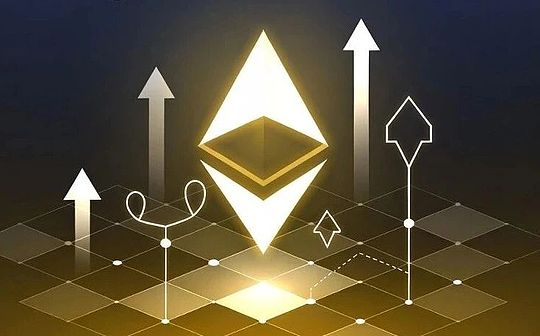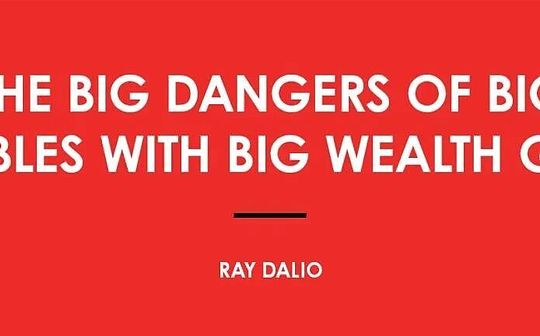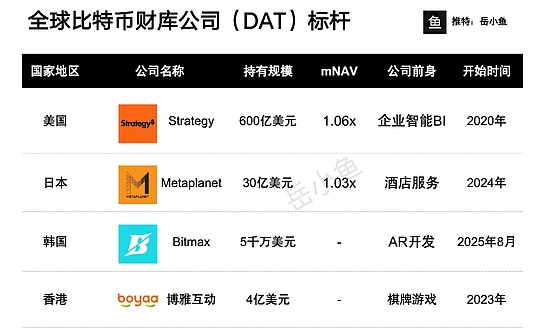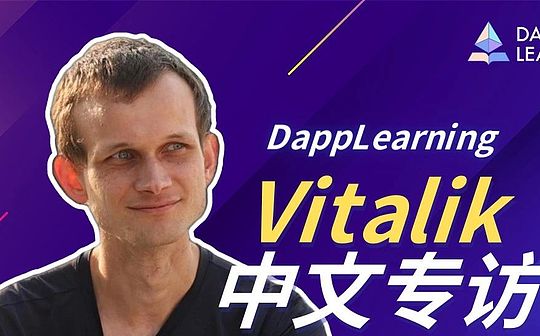
Interview: Yan
On April 7, 2025, Vitalik and Xiaowei appeared at the event at the Pop-X HK Research House event co-organized by DappLearning, ETHDimsum, Panta Rhei and UETH.
During the break, Yan, the initiator of DappLearning community, interviewed Vitalik, covering multiple topics such as ETH POS, Layer2, cryptography and AI.This interview is a Chinese dialogue, and Vitalik’s Chinese performance is very fluent.
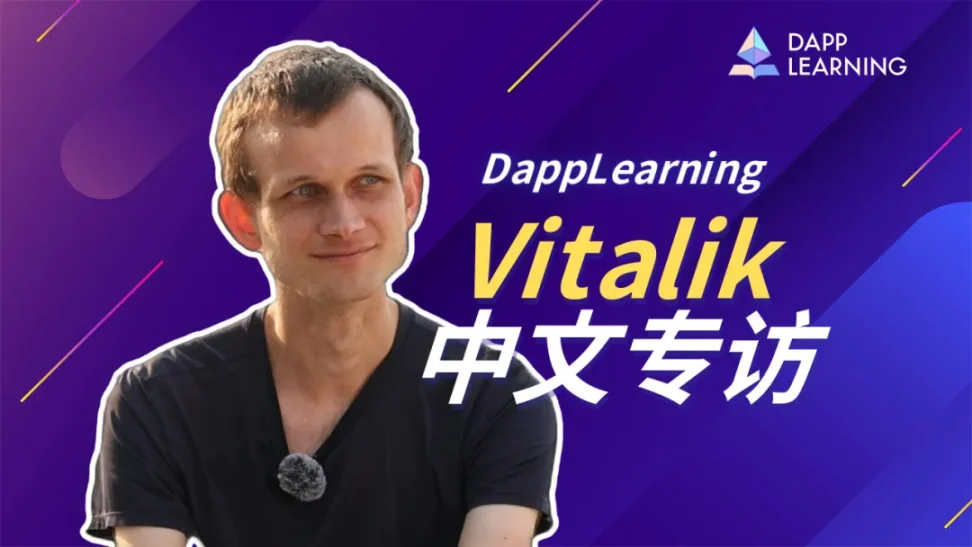
The following is the content of the interview (the original content has been compiled for easier reading comprehension):
Thoughts on POS upgrades
Yan:
Hello Vitalik, I am Yan from the DappLearning community and I am very honored to be interviewing you here.
I started to learn about Ethereum in 2017. I remember that in 2018 and 2019, everyone had a very fierce discussion on POW and POS, and this topic may continue to be discussed.
From now on, (ETH) POS has been running stably for more than four years, and there are millions of Validators in the consensus network.But at the same time, the exchange rate of ETH against BTC has been falling all the time, which has both positive and some challenges.
So at this point in time, how do you view Ethereum’s POS upgrade?
Vitalik:
I think the prices of BTC and ETH have nothing to do with POW and POS.
There are many different voices in the BTC and ETH communities, and the things these two communities do are completely different, and everyone’s way of thinking is also completely different.
Regarding the price of ETH, I think there is a problem. ETH has many possible futures. (It can be imagined) in these futures, there will be many successful applications on Ethereum, but these successful applications may not bring enough value to ETH.
This is a problem that many people in the community are worried about, but in fact this problem is very normal.For example, Google, they do many products and many interesting things.But more than 90% of their Revenue is related to their Search business.
The Ethereum ecological application and ETH (the relationship between price) are also similar.Some applications pay a lot of transaction fees, they consume a lot of ETH, and there are also many (applications) they may be more successful, but their success with ETH is not as much.
So this is a question we need to think about and continue to optimize.We need to support more applications that have long-term value for Ethereum Holder and ETH.
So I think ETH’s future success may appear in these areas.I don’t think there is much correlation with the improvement of consensus algorithms.
PBS architecture and centralization concerns
Yan:
Yes, the prosperity of the ETH ecosystem is also an important reason why we developers are willing to build it.
OK,So what do you think of the PBS (Proposer & Builder Separation) architecture of ETH2.0?This is a good direction. In the future, you can use a mobile phone as a light node, go to verify (ZK) proof, and then everyone can stake 1 ether and become a Validator.
But Builder may be more centralized. He has to do things like anti-MEV and generate ZK Proof. If the Based Roll Up is used, then Builder may do more things, such as being a Sequencer.
Will Builder be too centralized in this way?Although Validator is decentralized enough, it is a chain.If there is a problem in the middle link, it will also affect the operation of the entire system. How to solve the anti-censorship problem in this area?
Vitalik:
Yes, I think this is a very important philosophical question.
In the early days of Bitcoin and Ethereum, there was a subconscious assumption:
Building a block and verifying a block is an operation.
Suppose you are building a block, if your block contains 100 transactions, then you need to run so many (100 transactions) of gas on your own node.When you build the block and broadcast the built block to the whole world, every node in the world also needs to do so much work (consuming the same gas).So if we set up gaslimit to enable every Laptop or Macbook or server of some size in the world to build blocks, then the corresponding node server is required to verify these blocks.
This is the previous technology, now we have ZK, DAS, many new technologies, and Statelessness (stateless verification).
Before these technologies were used, building blocks and verifying blocks needed to be symmetric, and now they can become asymmetric.So the difficulty of building a block may become very high, but the difficulty of verifying a block may become very low.
Use a stateless client to make an example: If we use stateless technology and increase gaslimit ten times, the computing power requirement for building a block will become huge, and that ordinary computer may no longer be able to do it.At this time, you may need to use a particularly high-performance MAC studio or a stronger configuration server.
But the cost of verification will become lower, because verification does not require much storage at all, relying solely on bandwidth and CPU compute resources.If ZK technology is added, the cost of the verified CPU can also be removed.If that DAS is added, the cost of verification will be very, very low.If you build a block, the cost of verification will become higher.
So is this better compared with the current situation?
This question is quite complicated. I will think about it this way, that is, if there are some super nodes in the Ethereum network, that is, some nodes have higher computing power, we need them to do high-performance computing.
So how can we prevent them from doing evil, such as several types of attacks,
First: Create a 51% attack.
Second: Censorship attack.If they don’t accept transactions from some users, how can we reduce this type of risk;
Third: How can we reduce these risks in anti-MEV-related operations?
In terms of 51% attacks, since the verification process is done through Attester, they need to verify DAS, ZK Proof and stateless clients for Attester nodes.The cost of this verification will be very low, so the threshold for being a consensus node will be relatively low.
For example, if some Super Nodes will build blocks, if such a situation occurs, 90% of these nodes are you, 5% are him, and 5% are others.If you don’t accept any transaction at all, it’s actually not a particularly bad thing. Why?Because you have no way to interfere with the entire consensus process.
So you can’t do a 51% attack, and the only thing you can do is that you can hate certain users’ transactions.
The user may only need to wait for ten or twenty blocks before allowing another person to include his transactions into the block. This is the first point.
The second point is that we have the concept of Fossil, so what does Fossil do?
Fossil is to separate the role of “select transactions” from the role of “execution transactions”.In this way, selecting which transactions are included in the next block can be done more decentralized. Therefore, through the Fossil method, for those small nodes, they will have the ability to independently select transactions to be included in the next block.In addition, if you are a big node, you have very few rights [1].
This method is more complicated than before. What we thought before was that each node was a personal laptop.But in fact, if you look at Bitcoin, it is now a relatively mixed architecture.Because the miner in Bitcoin is the kind of Mining Data Center.
So this is probably done in POS, that is, some nodes need more computing power and more resources.However, the rights of these nodes are limited, so other nodes can be very decentralized and very decentralized, so they can ensure the security and decentralization of the network.But this method is more complicated, so it is also a challenge for us.
Yan:
Very good idea.Centralization is not necessarily a bad thing, as long as we can limit his doing evil.
Vitalik:
right.
The problem between Layer1 and Layer2 and the direction of the future
Yan:
Thanks for answering my years of confusion, we come to the second part of the question. As witnesses of Ethereum’s journey, Layer2 has actually been very successful.Now the TPS problem is indeed solved.Unlike when ICO (snatching transactions) was in a state of congestion.
I personally think that L2 is very useful now, but there are many people who have proposed various solutions for the current liquidity fragmentation of L2. What do you think about the relationship between Layer1 and Layer2? Is the current Ethereum main network too Buddhist and decentralized, and has no constraints on Layer2.Whether Layer1 needs to formulate rules with Layer2, or formulate some distribution models, or adopt a plan like Based Rollup.Justin Drake recently proposed this plan at Bankless, and I agree with it. What do you think? I am also curious when it will be launched if there is a corresponding plan?
Vitalik:
I think there are several problems with our Layer2 now.
The first is that they are not making fast enough in terms of security.So I’ve been pushing to upgrade Layer2 to Stage 1 and hopefully this year it can be upgraded to Stage 2.I’ve been urging them to do this, and I’ve been supporting L2BEAT to do some more transparency in this regard.
The second is the issue of L2 interoperability.That is, cross-chain transactions and communications between two L2s. If the two L2s are in the same ecosystem, interoperability needs to be simpler, faster and lower cost than now.
We started this job last year, now called Open Intents Framework, and Chain-specific addresses, which is mostly UX work.
Actually, I think the cross-chain problem of L2 may be 80% of the problem of UX.
Although the process of solving UX problems may be more painful, as long as the direction is right, complex problems can be made uncomplicated.This is also the direction we are working on.
Some things need to be taken a step further, for example, Optimistic Rollup’s Withdraw is one week.If you have a coin (Token) on Optimism or Arbitrum, it will take a week to cross-chain that coin to L1 or cross-chain to another L2.
You can have Market Makers wait for a week (you will have to pay a certain handling fee to him).For ordinary users, they can cross-chain from one L2 to another through Open Intents Framework Across Protocol and other methods, for some small transactions. This is OK.However, for some large-scale transactions, Market Makers still have restrictions on their liquidity.So the transaction fees they need will be higher.I posted that article [2] last week, which is the verification method I support 2 of 3, which is the OP + ZK + TEE method.
Because if you do that kind of 2 of 3, you can meet three requirements at the same time.
The first requirement is to be completely Trustless, without the need for Security Council (Security Council), TEE technology is a supporting role, so it does not require full trust.
Second, we can start using ZK technology, but the ZK technology is relatively early, so we cannot rely entirely on this technology.
Third, we can reduce the time for Withdraw from one week to one hour.
You can think that if the user uses the Open Intents Framework, the liquidity cost of Market Makers will be reduced by 168 times.Because Market Makers have to wait for (do the Rebalance operation) time from 1 week to 1 hour.In the long run, we have plans to reduce the Withdraw time from 1 hour to 12 seconds (current block time), and if we use SSF, we can reduce it to 4 seconds.
Currently, we will also use zk-SNARK Aggregation, which will process the ZK proof process in parallel and reduce Latency a little.Of course, if the user does this with ZK, he does not need to do it through Intents.But if they do it through Intents, the cost will be very low, which is all this part of Interactability.
Regarding the role problem of L1, perhaps in the early days of L2 Roadmap, many people would think that we can completely copy Bitcoin Roadmap. L1 will have very few uses, only proof (something like a small amount of work), and L2 can do everything else.
But we found that if L1 didn’t have any role at all, this would be dangerous for ETH.
One of our biggest concerns we have talked about before is that the success of Ethereum applications cannot be the success of ETH.
If ETH fails, it will lead to our community having no money and no way to support the next round of applications.So if L1 does not play a role at all, the user experience and the entire architecture will be controlled by L2 and some applications.There will be no one representing ETH.So if we can assign more roles to L1 in some applications, it will be better for ETH.
The next question we need to answer is what will L1 do?What will L2 do?
I posted an article in February [3]. In an L2 Centric world, there are many more important things that need L1 to do.For example, L2 needs to issue proof to L1. If there is a problem with one L2, the user will need to cross-chain to another L2 through L1. In addition, Key Store Wallet, Oracle Data can be placed on L1, etc.There are many such mechanisms that need to rely on L1.
There are also some high-value applications, such as Defi, which are actually more suitable for L1.An important reason why some Defi applications are more suitable for L1 is that their Time Horizon (investment period) needs to be waited for a long time, such as one, two, and three years.
This is especially obvious in the forecasting market. Sometimes some questions are asked in the forecasting market, such as what will happen in 2028?
There is a problem here, if there is a problem with the governance of L2.That theoretically all the users there they can Exit , they can move to L1 , they can move to another L2 .However, if there is an application in this L2 and its assets are locked in long-term smart contracts, then the user will not be able to exit.So there are many theoretically safe Defis, which are not very safe in fact.
For these reasons, some applications should still be done on L1, so we have begun to pay more attention to the scalability of L1.
We now have a Roadmap, and in 2026 there are about four to five ways to improve the scalability of L1.
The first is Delayed Execution (separate block verification and execution), which means that we can only verify the block in each slot, so that it can be truly executed at the next slot.This has the advantage that our maximum acceptable execution time may be increased from 200 milliseconds to 3 seconds or 6 seconds.This will give you more processing time [4].
The second is Block Level Access List, which means that each block needs to be explained in the information of this block. Which accounts the block needs to read and the relevant storage status. It can be said that it is similar to Stateless without Witness. One advantage is that we can process the operation and IO of EVM in parallel, which is a relatively simple implementation method for parallel processing.
The third is Multidimensional Gas Pricing [5], which can set the maximum capacity of a block, which is very important for security.
Another is (EIP4444) historical data processing, which does not require each node to permanently save all information.For example, each node can only save 1%, we can use p2p method, for example, your node may store part of it, and its node may store part of it.In this way, we can store that information more scattered.
So if we can combine these four solutions, we now think that it may be able to increase the Gaslimit of L1 by 10 times, and all our applications will have the opportunity to start relying more on L1 and doing more things on L1, which will be beneficial to L1 and ETH.
Yan:
OK, next question, will we have a Pectra upgrade this month?
Vitalik:
In fact, we hope to do two things, which is to upgrade Pectra around the end of this month, and then upgrade Fusaka in Q3 or Q4.
Yan:
Wow, so fast?
Vitalik:
Hopefully, yes.
Yan:
The question I asked next is also related to this. As someone who has watched Ethereum grow along the way, we know that in order to ensure security, Ethereum probably has five or six clients (consensus client and execution client) developed at the same time, and there is a lot of coordination work in the middle, resulting in a relatively long development cycle.
This has its pros and cons, and it may be slower than other L1s, but it is also safer.
But there is a plan that will prevent us from waiting for a year and a half before we can upgrade.I probably saw you proposed some solutions. Can you introduce them in detail?
Vitalik:
Yes, there is a solution where we can improve coordination efficiency more.We are now starting to have more people who can wander between different teams to ensure more efficient communication between teams.
If a client team has a problem, they can tell the problem and let the researcher team know that Thomas actually becomes one of our new EDs. He is in the client (team), and now he is also in the EF (team).He can do this coordination, this is the first point.
The second point is that we can be more strict with the client team. Our current method is, for example, if there are five teams, then all five of our teams need to be fully prepared, and we will announce the next hard fork (network upgrade).We are now thinking that we can only wait for four teams to complete and we can start upgrading, so that we don’t need to wait for the slowest one, and we can also mobilize everyone’s enthusiasm.
How to view cryptography and AI
Yan:
Therefore, appropriate competition still needs to be.It’s pretty good. I really look forward to every upgrade, but don’t let everyone wait too long.
Later I want to ask questions about cryptography, which are quite divergent.
When our community was first established in 21 years, developers from major domestic exchanges and researchers from Venture were gathered to discuss Defi.21 years is indeed the stage where everyone participates in understanding Defi, learning and designing Defi, and it is a wave of participation for the whole nation.
From the perspective of later development, for ZK, whether it is Volkswagen or developers, learning ZK, such as Groth16, Plonk, and Halo2, the more developers go to later, it will be difficult to go to Catch Up, and the technological progress is very fast.
In addition, now we see one direction that ZKVM is developing rapidly, which leads to ZKEVM’s direction not as popular as before. When ZKVM gradually matures, developers don’t have to pay too much attention to the underlying ZK.
What suggestions and opinions do you have on this?
Vitalik:
I think the best direction for some ZK ecosystem is that most of these ZK developers can know some high-end languages, namely HLL (High Level Language).Then they can write their application code in the HLL, and those researchers of Proof System can continue to modify and continue to optimize the underlying algorithm.Developers need to be layered, they don’t need to know what is happening in the next layer.
There may be a problem now that Circcom and Groth16 have a very developed ecosystem now, but this has a relatively large limitation on the application of ZK ecologically.Because Groth16 has many shortcomings, such as the problem of Trusted Setup that each application needs to go to by itself, and its efficiency is not very high, so we are also thinking that we need to place more resources here and then help more modern HLLs succeed.
Another thing is that the route of ZK RISC-V is also very good.Because RISC-V has become an HLL, many applications, including EVM, and some other applications, can be written on RISC-V [6].
Yan:
OK, so it’s good for developers to just learn Rust.I attended Devcon Bangkok last year and also heard the development of applied cryptography, which also made my eyes shine.
Regarding the aspect of applied cryptography, what do you think about the combination of ZKP, MPC, and FHE, and what suggestions do you give to developers?
Vitalik:
Yes, this is very interesting.I think FHE has a good prospect now, but there is a worry, that is, MPC and FHE always need a committee, which means that you need to choose, for example, seven or more nodes.If those nodes may be 51% or 33% may be attacked, then there will be problems with your system.It is equivalent to saying that the system has a Security Council, which is actually more serious than the Security Council.Because, if an L2 is Stage 1, then 75% of the nodes in the Security Council need to be attacked before there will be problems [7], which is the first point.
The second point is the Security Council. If they are reliable, most of them will be thrown into cold wallets, that is, most of them will be offlined, but in most MPCs and FHEs, their committee needs to be online all the time in order for this system to run, so they may be deployed on a VPS or other server, so it will be easier to attack them.
This makes me a little worried. I think many applications can still be made, but they have advantages, but they are not perfect.
Yan:
Finally, I will ask another relatively relaxed question. I see that you are also paying attention to AI recently. I want to list some opinions.
For example, Elon Mask said that humans may just be a guide to silicon-based civilization.
Then there is a view in “Network Countries” that centralized countries may prefer AI, while democratic countries prefer blockchain.
Then, from our experience in the currency circle, the premise of decentralization is that everyone will abide by the rules, check and balance each other, and know how to take risks, which will eventually lead to elite politics.So what do you think of these views?Just talk about your opinions.
Vitalik:
Yes, I’m thinking about where to start answering.
Because the field of AI is very complex. For example, five years ago, no one might predict that the United States will have the best Close Source AI in the world, and China will have the best Open Source AI. AI can improve all the capabilities of everyone and sometimes also improve the rights of some centralized (national).
But AI can sometimes be said to have a relatively democratic effect.When I use AI myself, I find that in those areas where I have already made it to the top 1,000 in the world.For example, in some areas of ZK development, AI actually helps me less in the ZK part, so I still need to write most of the code myself.But in those fields where I am a rookie, AI can help me a lot. For example, I have never done it before for the development of Android APPs.I made an APP ten years ago, using a framework, written in Javascript, and then converted it into an APP. Apart from that, I have never written a Native Android APP before.
I did an experiment early this year, which means I wanted to give it a try and write an App through that GPT, and it was finished within 1 hour.It can be seen that the gap between experts and rookies has been reduced a lot through the help of AI, and AI can also give some new opportunities.
Yan:
To add, thank you for giving me a new angle.I would have thought that with AI, experienced programmers may learn faster, but are not friendly to novice programmers.But in some aspects, it will indeed improve their abilities for novices.It may be an equal right, not a differentiation, right?
Vitalik:
Yes, but now a very important question that needs to be considered is what effect their combination will have on society, including blockchain, AI, cryptography, and other technologies.
Yan:
So you still hope that humans will not just be an elite rule, right?It is also hoped to achieve Pareto optimality in the entire society.Ordinary people become super individuals through AI and blockchain empowerment.
Vitalik:
Yes, super individual, super community, super human.
Expectations for the Ethereum ecosystem and suggestions for developers
Yan:
OK, then we go to the last question, some expectations and messages from the developer community?What do you want to say to developers in the Ethereum community?
Vitalik:
For developers of these Ethereum applications, think about it.
There are many opportunities to develop applications in Ethereum now, and there are many things that were not possible before, and now we can do it.
There are many reasons here, such as
First: The TPS of L1 was not enough before, so now this problem is gone;
Second: There was no way to solve the privacy problem before, but now there is;
Third: It is because of that AI, the difficulty of developing anything has become less. It can be said that although the complexity of the Ethereum ecosystem has become higher, through AI, everyone can still understand Ethereum more.
So I think there are many things that failed ten years ago or five years ago that may be successful now.
In the current blockchain application ecosystem, I think the biggest problem is that we have two applications.
The first one is that it can be said to be very open, decentralized, secure, and particularly idealistic (application).But they only have 42 users.The second type can be said to be a casino.The problem is that these two extremes are both unhealthy.
So what we want is to do some applications.
The first thing users will like to use is that it will have real value.
Those applications will be better for the world.
The second is that there are really some business models, such as economics, that can be continuously operated, and there is no need to rely on limited money from foundations or other organizations, which is also a challenge.
But now I think everyone has more resources than before, so if you can find a good idea and if you can do it well, then your chances of success are very high.
Yan:
As we looked through the way, I think Ethereum is actually quite successful. It has always led the industry and is working hard to solve the problems encountered by the industry under the premise of decentralization.
I also feel a little deeper. Our community has always been non-profit, through Gitcoin’s Grant in the Ethereum ecosystem, OP’s retrospective rewards, and airdrop rewards from other project parties.We found that Build can get a lot of support in the Ethereum community, and we are also thinking about how to enable the community to operate continuously and stably.
The construction of Ethereum is really exciting, and we also hope to see the real implementation of the world’s computers as soon as possible. Thank you for your precious time.
Interview with Moxingling, Hong Kong
April 07, 2025

